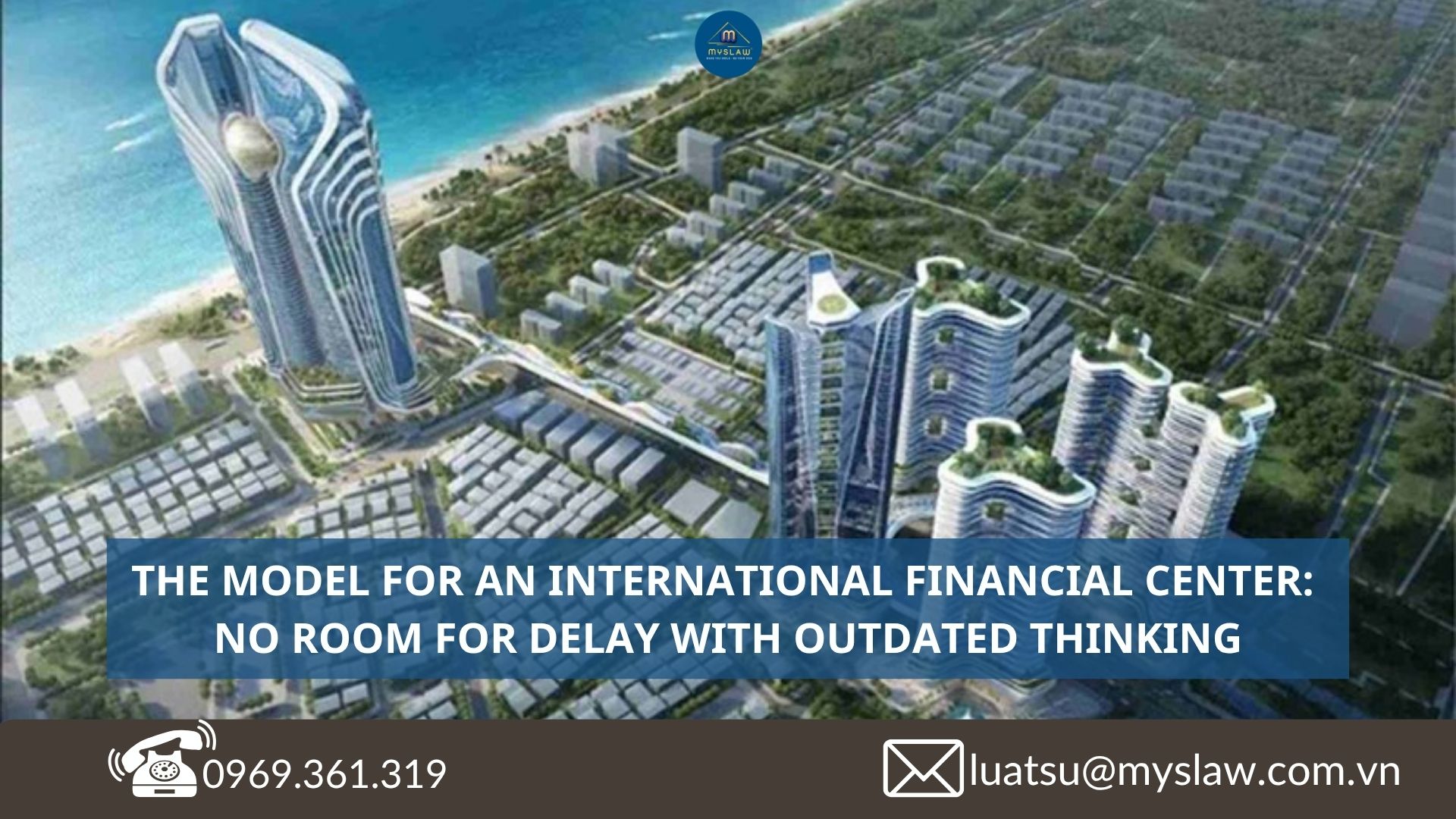Vietnam is exploring models to develop international financial centers, charting a path for Ho Chi Minh City (HCMC) and Da Nang. To rise as a regional financial hub, the choice of model cannot afford hesitation rooted in outdated thinking.

Aspiration
The year 2024 marked a pivotal moment in Vietnam’s economic institutional reforms. On November 15, 2024, the Politburo issued Notification No. 47-TB/TW, endorsing the establishment of regional and international financial centers in Vietnam. Accordingly, HCMC is set to become a comprehensive international financial center, while Da Nang will serve as a regional financial hub.
To implement this policy, on December 31, 2024, the Government issued Resolution 259/NQ-CP, outlining a detailed action plan and assigning 49 task groups to 12 ministries, agencies, and localities. This demonstrates a clear transition from political resolve to concrete action.
HCMC plans to utilize a 9.2-hectare site in the Thu Thiem New Urban Area (Thu Duc City) to build its international financial center, envisioned as a magnet for global capital and a new engine for national growth. In Da Nang, promotional activities are gaining momentum. International conferences and forums are being held consecutively, not only to spread awareness but also to invite the global financial community to take note of Vietnam—an emerging potential yet to be fully unveiled.
The Government is showcasing its ambition to place Vietnam on the global financial map, leveraging two key advantages. First is the cost advantage—a relative but compelling factor. In Singapore, establishing a business costs between $5,000 and $10,000, with office rental fees reaching $1,000 per square meter. In Vietnam, these costs are approximately $200. From a strategic perspective, attracting hundreds of small enterprises to “nest” can sometimes be more practical than banking on a few “big eagles.”
Second is Vietnam’s technological leap and openness to innovation. Vietnam ranks fifth globally in cryptocurrency adoption (Chainalysis, 2024), with over 17 million users and blockchain capital flows exceeding $105 billion in the past two years. Amid the wave of financial technology (Fintech), blockchain, and artificial intelligence (AI)—technologies capable of dismantling traditional barriers—Vietnam has the opportunity to shape a next-generation financial center model: efficient, low-friction, and aligned with the digital economy.
Four strategic objectives guide Vietnam’s journey to establish its financial centers: first, attracting international capital to position itself as a potential rival to centers like Singapore, Hong Kong, and Shanghai within 5 to 10 years; second, building institutional infrastructure to financialize the economy, fostering a diverse and robust financial services ecosystem; third, creating a strategic spatial development axis, with HCMC as a global financial hub and Da Nang piloting innovative, smart finance models; and fourth, testing flexible mechanisms, including legal sandboxes and bespoke regulations, as exemplified by Dubai’s transformation into a reform success story.
However, critical questions arise: Is a “low-cost advantage” sufficient to convince financial investors who prioritize stability and transparency? Does labeling a financial center “international” truly position Vietnam as a new Singapore, or is it merely an aspirational dream? More crucially, is Vietnam’s current capacity—from legal frameworks and technology to human resources—ready to operate a sophisticated financial ecosystem where capital flows seamlessly, silently permeating every corner of the economy?
Global Lessons: Insights from Dubai and India
To determine the right path, Vietnam is studying international financial center models like Dubai (with the Dubai International Financial Centre, DIFC) and India (with Mumbai and the GIFT City financial zone). These represent two contrasting approaches.
Dubai embodies an open-door policy, welcoming global winds, while Mumbai proceeds cautiously, navigating a narrow corridor. One offers a bold, globalized institutional framework, while the other remains tethered to existing administrative systems.
Dubai’s model exudes international ambition. The DIFC’s success stems not only from modern infrastructure or abundant capital (skyscrapers and powerful investment funds) but also from fostering trust. A legal framework based on Common Law, independent courts, zero tax rates, and liberal capital transfer policies reassure investors. Crucially, Dubai embraces risk to adopt innovation—from Fintech and cryptocurrencies to regulatory sandboxes—experimenting with flexibility and openness. Modern infrastructure, global connectivity, and a high-standard living environment sustain its appeal to talent and investors.
Yet, openness does not mean lax oversight. Dubai has established robust monitoring and compliance systems to prevent risks like money laundering or policy abuse. A successful international financial center cannot stand apart from the world, but to avoid becoming an isolated “oasis,” Dubai has integrated with key sectors like real estate, tourism, and aviation, forming a cohesive ecosystem.
In contrast, India’s model (Mumbai/GIFT City) relies on domestic strengths but remains cautious globally. India boasts a vast talent pool and market. Mumbai anchors the national financial system, with a market capitalization exceeding $3,500 billion, serving as a hub for one of Asia’s largest domestic financial markets. GIFT City, an experiment to create an “Indian Hong Kong,” reflects India’s recognition of the need for an open environment to attract global capital.
However, India’s approach remains characteristically Asian: gradual, deliberate, and cautious. Overlapping legal frameworks, tightly controlled capital flows, and a non-freely convertible Rupee hinder GIFT City’s appeal, despite its incentives. Additional challenges include its distance from urban centers, underdeveloped infrastructure, and a living environment that is not yet truly international.
Lessons for Vietnam: Embrace Dubai’s Path
From these two extremes, Vietnam must decide: to become a regional financial hub, it cannot linger with outdated thinking. Dubai’s model—with its bold institutions, international environment, and superior policies—should be the priority.
Specifically, HCMC should be designed as a special financial zone with its own laws, courts, and regulatory body, operating under Common Law to instill confidence in global investors. Additionally, a genuine sandbox mechanism is needed, allowing new financial technologies to be tested in a transparent yet flexible environment. On taxation, bold incentives, even 0% rates in the initial years, should be considered. More importantly, easing capital controls is essential to enable smooth money flows.
Finally, HCMC must become a desirable place to live and work, with international-grade infrastructure, high-quality services, and flexible visa procedures to attract and retain global talent.
Failure to break from old paradigms risks replicating GIFT City’s model—ambitious but lacking momentum. Conversely, daring to “break the mold,” as Vietnam did during its Doi Moi reforms over three decades ago, could usher in a new development cycle, positioning HCMC as Vietnam’s financial gateway to the global economy.
Blockchain and the Future of Financial Centers
A key highlight of Vietnam’s financial center strategy is its ambition to lead in emerging technologies, with blockchain and decentralized finance (DeFi) seen as spearheads. Experts argue that distributed ledger technology can reduce intermediaries, enhance transparency, and bolster security, revitalizing national financial infrastructure.
However, blockchain’s essence is decentralization—designed to distribute power, with transactions validated without a central authority. DeFi needs no physical address, and cryptocurrencies are borderless. If blockchain inherently requires no “center,” does focusing on a physical financial hub truly add value?
In reality, even before Vietnam’s financial center proposal was approved, and before the concept of a “financial center” emerged, Vietnamese communities were already among the world’s leaders in cryptocurrency adoption. By late 2024, nearly 17 million Vietnamese participated in this market—an impressive figure—but most transact on international platforms. The “market” has already formed where participants are, not waiting for a signboard labeled “financial center.”
Thus, when discussing “leveraging blockchain in financial centers,” the real question is: what to centralize, who to involve, and for what purpose? Is the goal to attract tech giants to establish offices? In practice, tech firms prioritize locations with clear policies, favorable tax rates, and transparent legal systems.
Vietnam ranks among the top 17 countries globally for cryptocurrency transaction volume. However, rankings for cryptocurrency adoption from 2022 to 2024 show Vietnam losing ground to Indonesia and India, which have begun establishing clear regulatory sandboxes. Conversely, if the aim is to foster domestic blockchain communities, a nuanced approach is needed. Developers do not necessarily require headquarters; they need an open work environment, high-speed internet, and legal protections for experimental code.
From a financial perspective, Vietnam currently lacks a critical infrastructure component: a legally clear cryptocurrency exchange. The absence of a domestic exchange pushes the capital of millions of Vietnamese overseas. A large-scale, transparent, licensed exchange could serve as a foundation to reorganize capital flows, protect investors, and attract international funds.
Establishing a domestic cryptocurrency exchange is not just a strategic response to global shifts but also a practical step to retain capital, connect scattered ideas, and create a true nucleus for Vietnam’s digital finance ecosystem.
The above information is provided by Mys Law. For any questions regarding the content of this article, please contact 0969.361.319 or email: [email protected] for further clarification. Best regards!
Compiler: Nguyen Anh Quan





